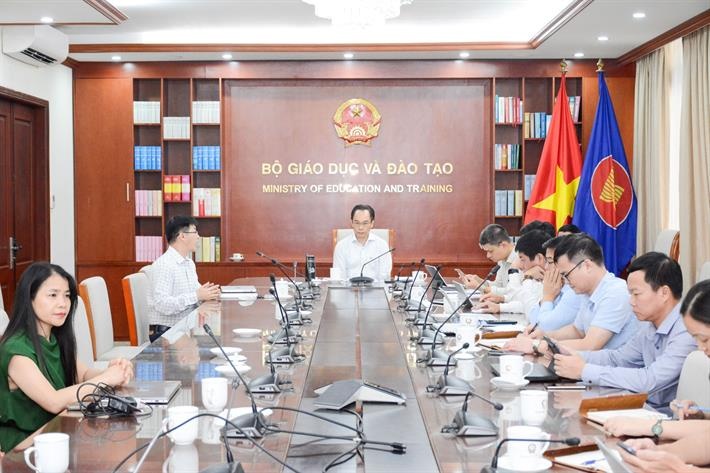Banking on reforms to meet integration
In 2001 Vietnam began a comprehensive multi-year banking and finance reform programme. World Bank country director Klaus Rohland discusses the progress that has been made and where Vietnam still needs to go from here.
 Klaus Rohland |
The reform programme is aimed at strengthening regulatory, supervisory and institutional frameworks; diversifying the financial sector; enhancing financial sector transparency and accountability; improving the financial health of the banking system; and creating incentives for banks to operate on a more commercially-oriented basis.
Commercial banks
State-owned commercial banks (SOCBs) continue to implement their restructuring plans aimed at transforming them into more commercially-oriented institutions, including improvements to credit policies and procedures, accounting practices, information systems, products and services, and capital. In June 2003 the State Bank announced its intention to equitise two of the five SOCBs, one of which is scheduled to have the participation of a strategic foreign investor. The consolidation of joint-stock banks (JSBs) has progressed and some of the JSB sector has posted strong growth and performance, despite the small size of their operations in the marketplace. While these actions represent encouraging progress, there are important shortcomings. The SOCB restructuring plans need to be updated with specific benchmarks to improve the restructuring of the operations and management. Moreover, the recapitalisation programme for the banks needs to be tightly linked to these benchmarks or unconditional recapitalisation and the potential associated risks will result in fiscal liabilities for the government or in the case of planned equitisation, will potentially pass the risks to the investing public or employees.
The State Bank
The State Bank recently issued a strategic plan for the reform of the institution to meet international standards in preparation for WTO accession. The bank has also issued a number of decisions to reorganise bank supervision, to gradually level the playing field for foreign banks, and to reclassify all non-performing loans in the four SOCBs and to phase in provisioning within three years. In addition, the State Bank has successfully launched the inter-bank payment system with usage far exceeding original expectations. Despite this progress, critical challenges remain and progress must be accelerated. These challenges include the strengthening of the bank’s supervisory function, disengaging it from a management role in the SOCBs, centralising the bank’s operations and rationalising the functions within the organisation, and ensuring consistency in the application of banking sector rules and regulations. A final key challenge that the State Bank must urgently address is to enhance the information systems and the system of accounting, reporting and disclosure standards.
Policy Lending
The government has initiated the separation of preferential and policy-based credit activities from SOCBs through the creation of the Vietnam Bank for Social Policies (VBSP) and the Development Assistance Fund (DAF). The VBSP will expand preferential lending to targeted poor and remote households, and the DAF will continue to act as the main specialised institution to conduct policy-based lending to large scale, medium- to long-term projects. Using these policy lending institutions will shift the inherent risks associated with policy lending from the financial sector to these extra-budgetary institutions. The fiscal burden of the lending operations will depend crucially on the quality of the lending and whether final borrowers can service their debts. Strengthening or revamping these institutions is the primary challenge for the reform process given their weaknesses: governing framework for operations; credit analysis capabilities; information systems; transparency; human resources capacities; and corporate governance structures; and also insufficient autonomy to make management decisions. At the same time, a sound regulatory framework for policy lending to minimise the risks and maximise the economic returns of investments will need to be developed.
Capital market development
The securities market is still in the nascent stage of development and still suffers from many problems typical of this early stage, including a lack of quality listings, low trading, lack of investor awareness, lack of robust infrastructure, and an under-developed regulatory and supervisory structure. The State Securities Commission (SSC) recently issued a strategic plan for the development of the capital markets to 2010 and recently adopted a new regulatory framework for the securities market in an attempt to strengthen the listing and information disclosure standards, widen the scope for Initial Public Offerings and SME equity listings, and increase foreign participation, among other areas of improvement. The necessary reforms will also include the development of the capital markets systems infrastructure, instituting a regulatory framework that is effective and inspires confidence, and strengthening the capacity of market participants.
The World Bank’s role
Vietnam faces many challenges in accelerating financial sector development reforms and the World Bank has been and will continue to be an active partner in this process. The World Bank has provided Vietnam with an investment loan to support the development of the payments system and bank modernisation efforts and is preparing a follow-up investment project. One additional lending operation is under preparation to assist the State Bank in developing comprehensive management information systems.
The World Bank is also supporting financial sector policy reforms through other operations, such as the Poverty Reduction Support Credit and the Rural Finance projects. Beyond lending operations, the World Bank has eight active or approved technical assistance programs that inter alia seek to improve banking sector regulation, supervision and accounting standards, assessing the credit information infrastructure, benchmarking supervisory standards, restructuring and auditing two SOCBs, preparing an SOCB for equitisation and strengthening the policy lending institutions. The focus of the interventions in the financial sector is expanding beyond the banking sector with one technical assistance project to assist in capacity building for the SSC.
What the stars mean:
★ Poor ★ ★ Promising ★★★ Good ★★★★ Very good ★★★★★ Exceptional
Related Contents
Latest News
More News
- Citi report delivers insights to market opportunities with AI (August 29, 2024 | 11:50)
- Credit continues to flow into real estate sector (August 29, 2024 | 11:49)
- Driving ASEAN’s supply chains through connectivity (August 28, 2024 | 10:06)
- Banks sharpen focus on scale-up of sustainability (August 28, 2024 | 08:00)
- Lenders still most active in corporate bond issuance (August 27, 2024 | 18:00)
- Vinpearl bags $150 million from international bonds in Singapore (August 27, 2024 | 17:21)
- Tech securities companies garner upward momentum (August 27, 2024 | 15:31)
- New policy promotes green banking development in Vietnam (August 27, 2024 | 09:08)
- Reference exchange rate up at week’s beginning (August 27, 2024 | 08:49)
- Vietnam should learn from international experience before raising beverage tax (August 27, 2024 | 08:00)

 Tag:
Tag:


















 Mobile Version
Mobile Version